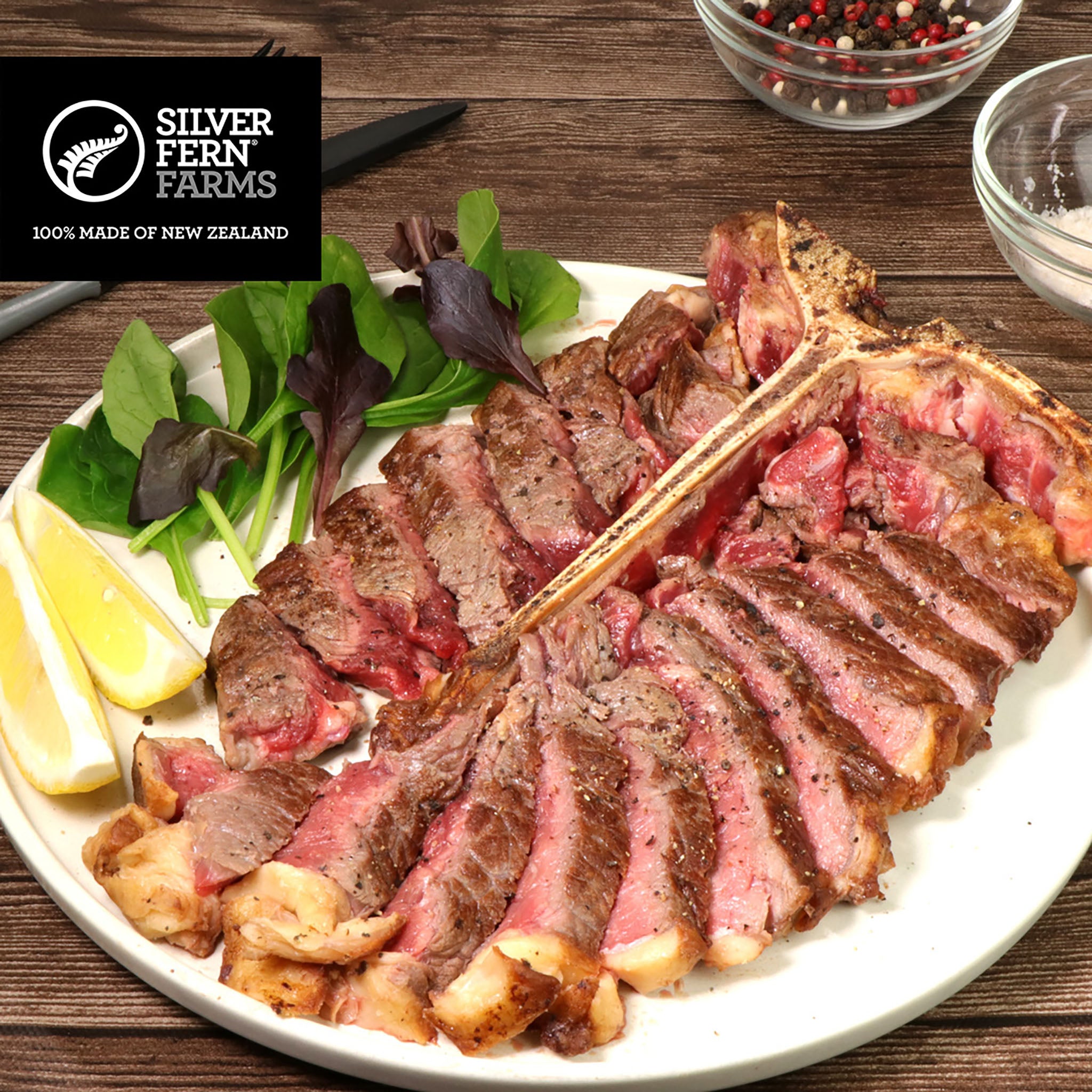
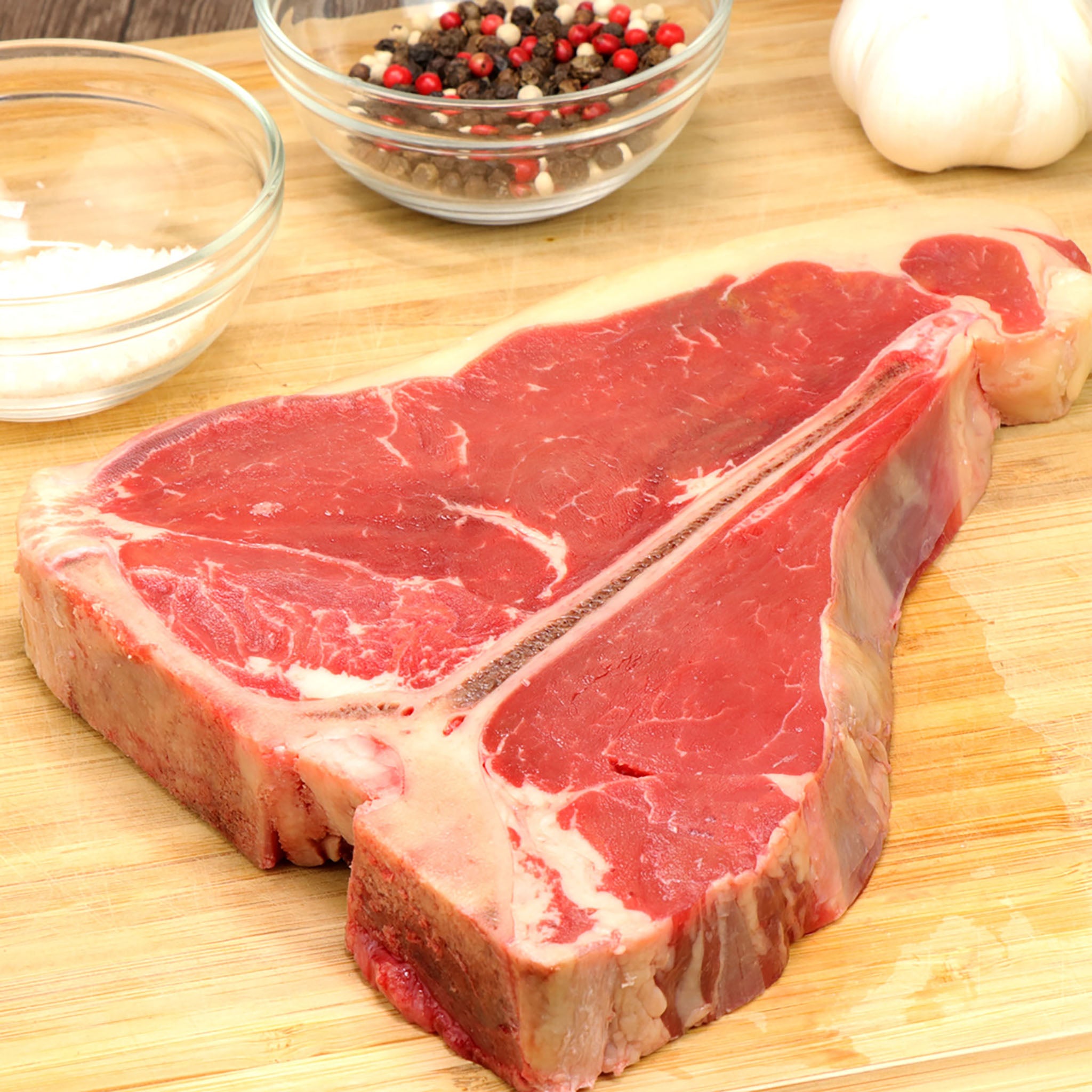
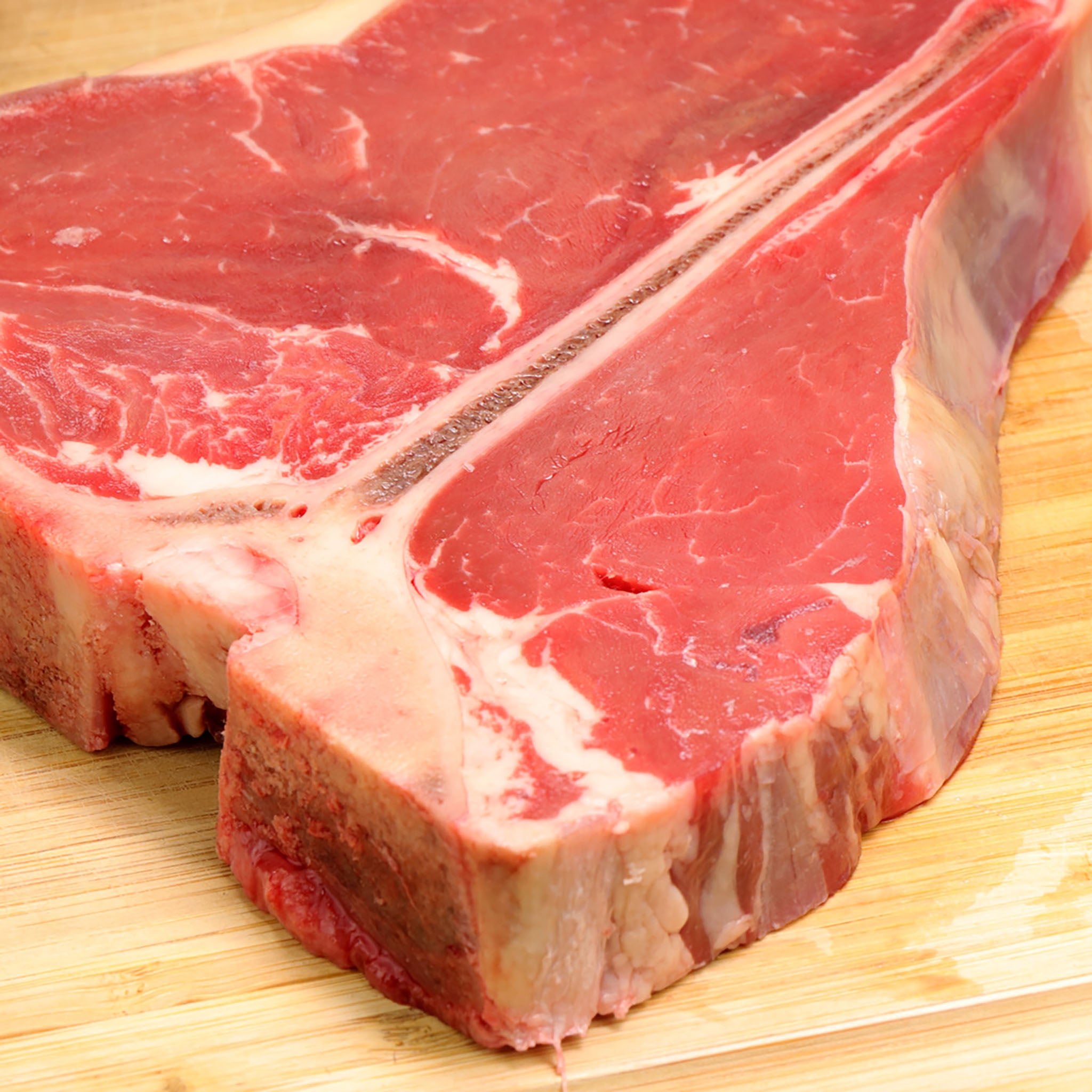
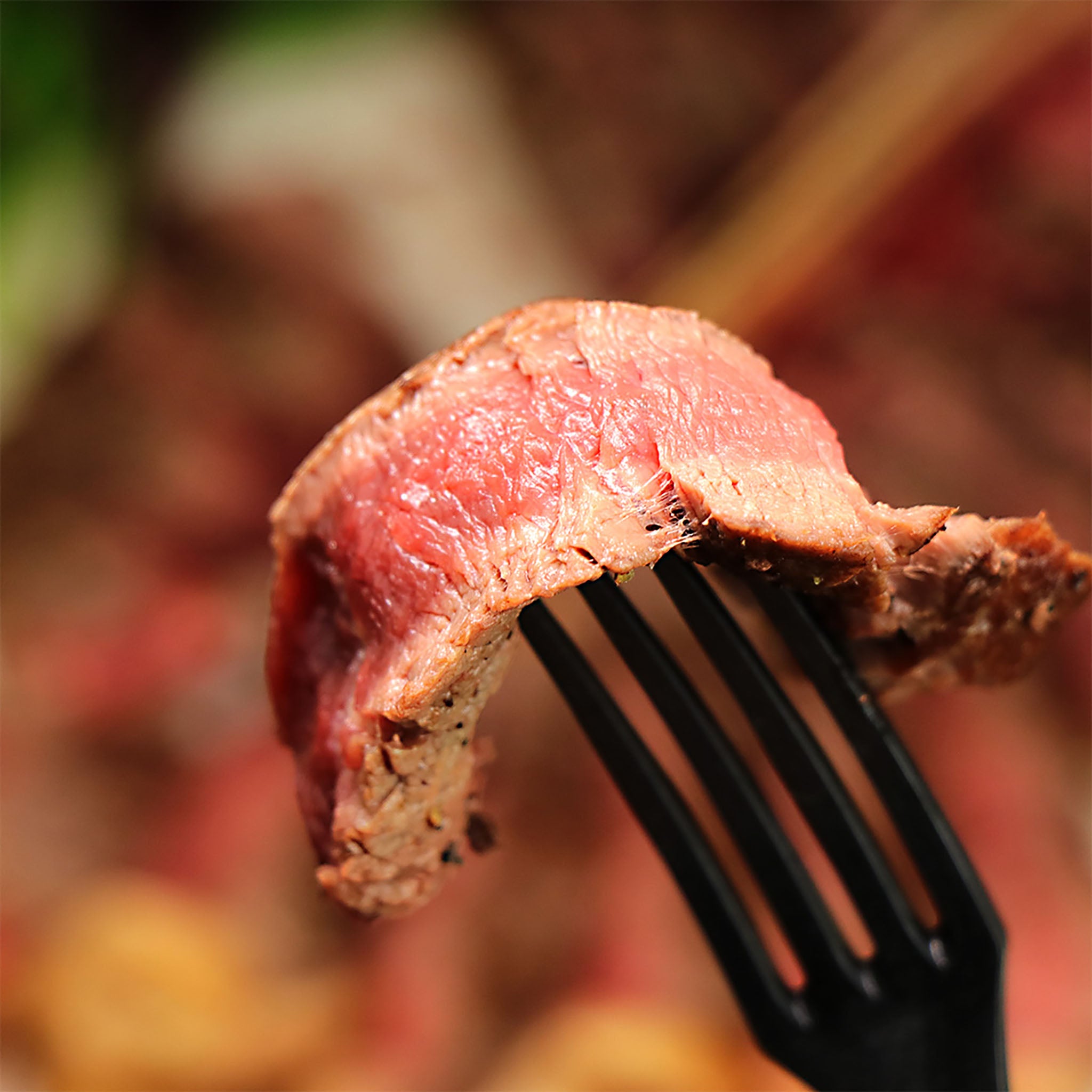
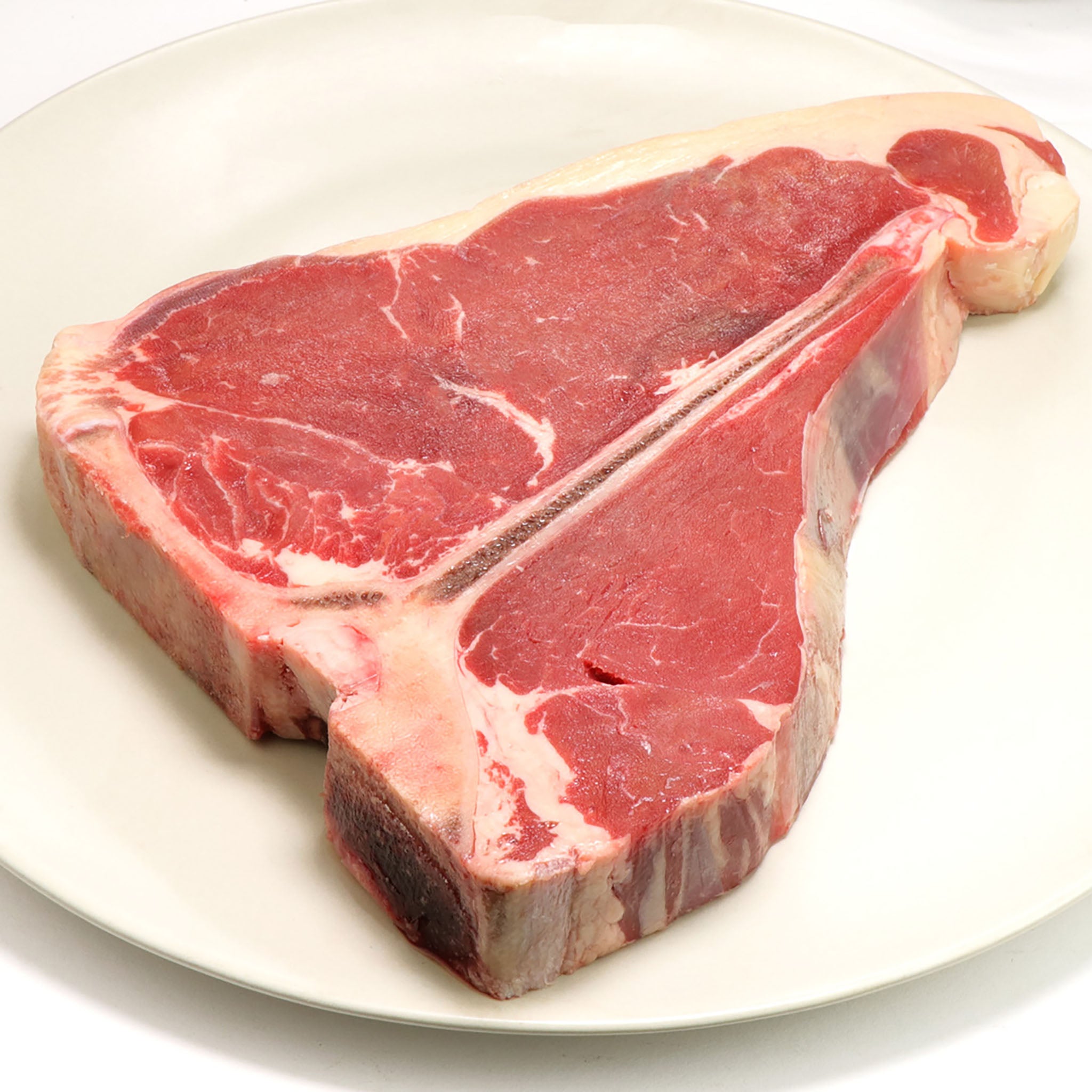
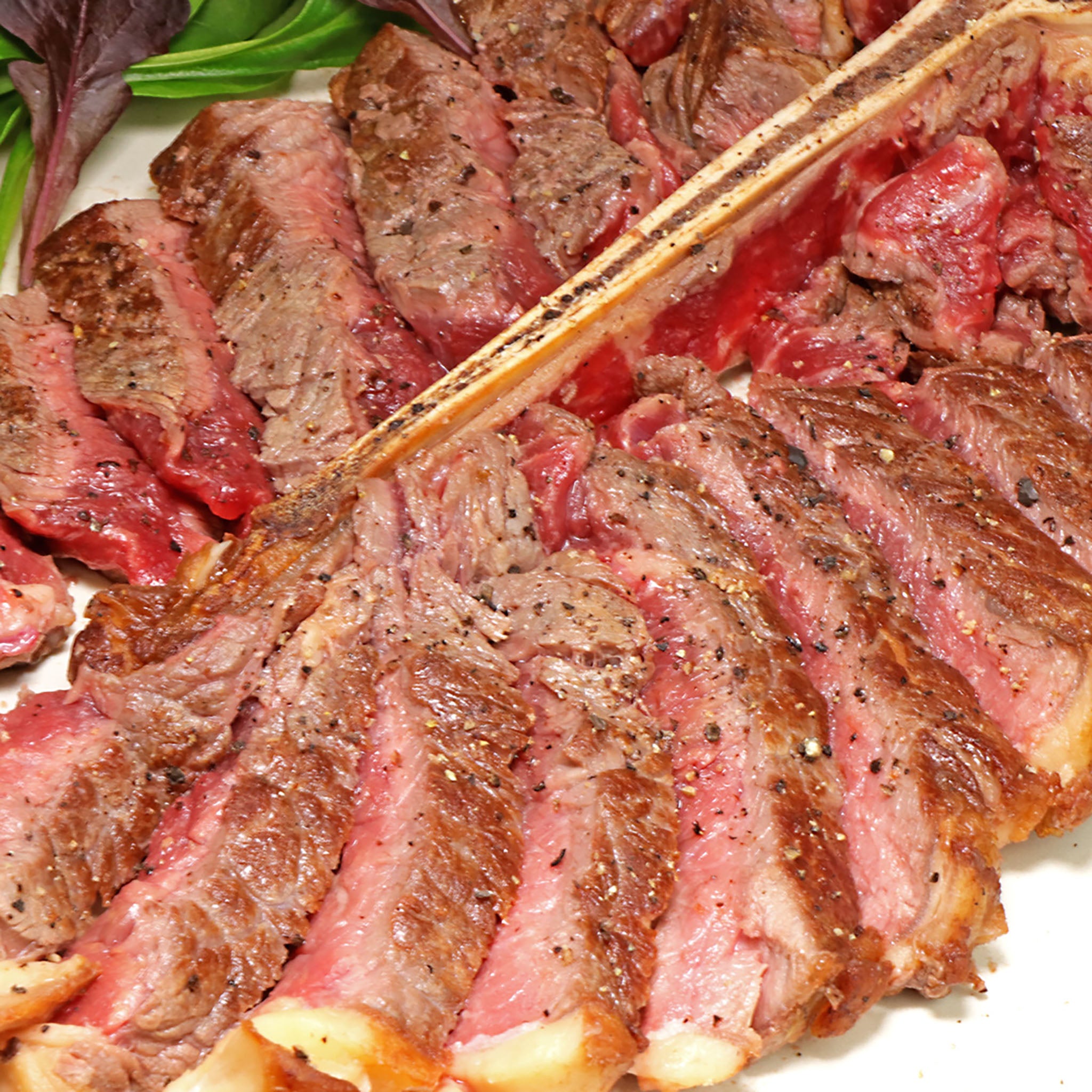
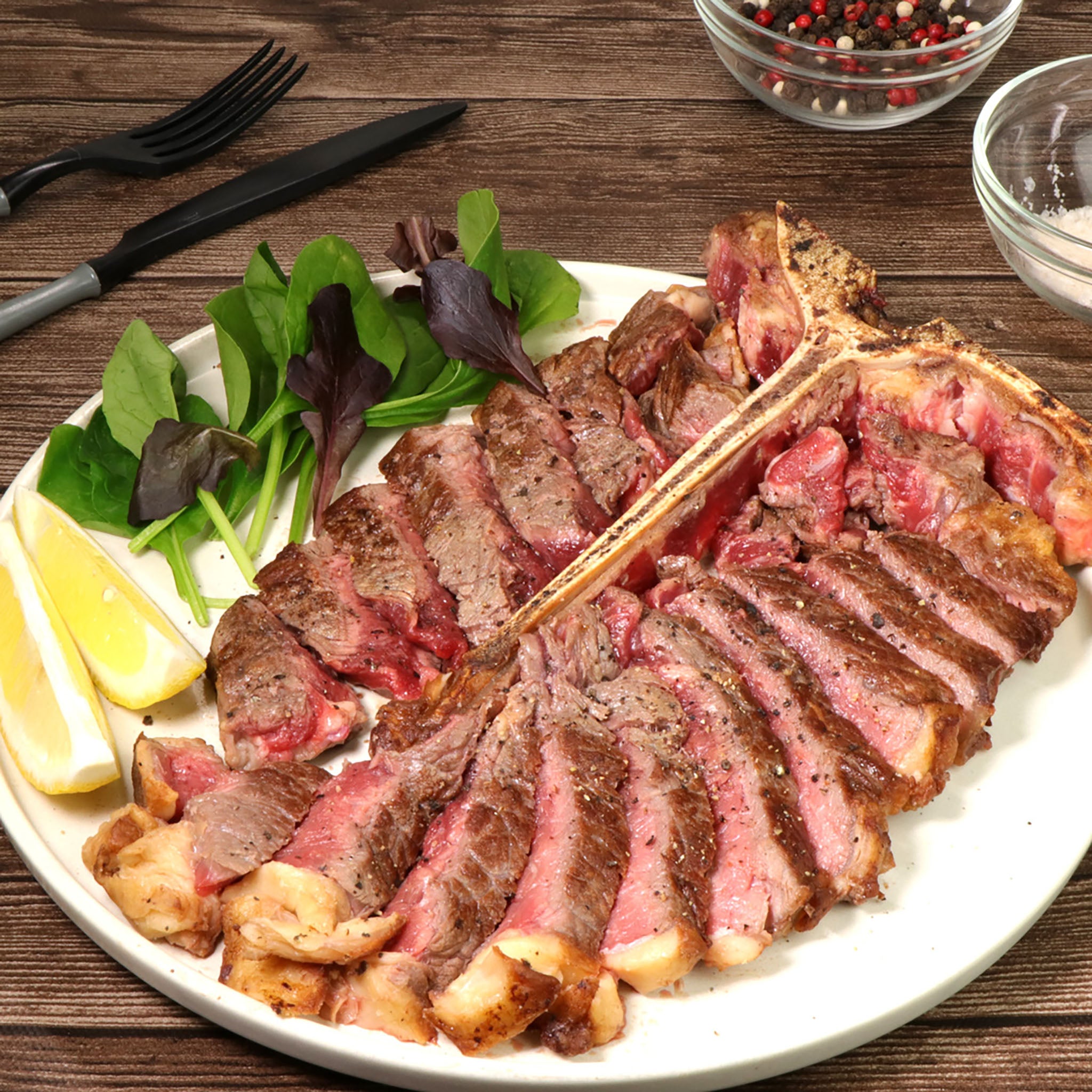
New Zealand Grass-Fed Beef T-Bone Steak 500g
Grass-fed beef T-bone steak!
Product Description
THE REAL DEAL! Nothing like some good old bone-in steak!
Enjoy both fillet and striploin cuts in one steak! (The filet part in t-bone is less than that of the porterhouse cut.)
Of course, like most of our beef selections, this one's grass-fed!
Packed with rich lean meat, and very little fat, this steak is great for those who are trying to be more health-conscious.
It's pretty much all lean, but don't worry. It's nice and soft. Plus, that bone in the steak will prevent it from shrinking when cooked.
New Zealand is known for their vast pastures, which makes it the perfect place to breed cattle! This steak comes from 100% grass-fed beef, and is guaranteed hormone and antibiotic-free. (details below)
Each cut is 500g! Season with your favorite Meat Guy spice blend, and enjoy every bite!
How to eat
Both sirloin and fillet are easy to cook, so you can enjoy them in any style you like. We recommend grilling it, but you can also broil, sauté, or pan-fry it. It's best lightly seasoned with The Meat Guy's Steak Spice and cooked medium rare.
Learn more
[Differences between Porterhouse steak, T-bone steak, and L-bone steak]
They vary in thickness, weight, and fillet proportions.
《Proportion of fillet》
Porterhouse: approx. 40%
T-bone: approx. 30%
L-bone: approx. 10% or less
*There are individual differences.
Porterhouse steak is the steak that contains the most fillet meat.
There are no other differences, and each steak is the best, allowing you to enjoy both sirloin and fillet at the same time.
[Characteristics of New Zealand grass-fed beef]
1. Grass-fed beef is raised on mineral-rich pastures.
New Zealand has a mild climate all year round, with abundant rainfall and water resources optimised for full-range grazing.
Farmers create pastures each season by sowing nutritious seeds, mainly from the legume, grass, and brassica families.
The grazing land is a vast area of about 10 million hectares, and the cows are raised on grass by grazing. This blessed natural environment is the first feature of New Zealand grass-fed beef!
2. Only the best meat breeds are carefully selected. Highly nutritious, juicy and tender.
Most of the cattle are young, mostly Angus breed, with an average age of around 24 months.
Because it is a breed exclusively for meat, it is tender and has almost no animal smell.
Grass-fed beef, like red meat fish such as tuna and bonito, is rich in the umami components inosinic acid and glutamic acid. It is rich in protein, iron, and zinc, which are essential for health and beauty, and is low in calories, fat, and bad cholesterol, making it ideal for those on a diet or training. It is also rich in omega-3 fatty acids.
3. Healthy cattle in a stress-free environment that does not require growth hormones or prophylactic antibiotics
New Zealand was one of the first countries in the global livestock industry to restrict the use of growth-promoting hormones.
Cows that have been administered growth-promoting hormones are isolated and processed, so a system has been established to ensure that only administered-free beef is shipped.
In contrast to cattle that are raised in overcrowded conditions such as in barns, these cattle are raised completely on pasture, so there is no need to give them antibiotics on a daily basis to prevent disease.
4. Zero incidence of BSE and foot-and-mouth disease
New Zealand has never experienced any serious diseases such as BSE, chronic wasting disease, bluetongue, or anthrax, thanks to its government monitoring of livestock health, strict quarantine system, and isolation from other continents.
5. The meat inspection system will be managed by the government
The New Zealand Food Authority provides centralised food control for both domestic and import industries.
All cattle are required to submit a "Livestock Breeding History Book." Traceability from farm to table is now mandatory, and veterinarians and inspectors check the health of each and every cattle, as well as the safety of the processing process.
They have started an electronic traceability system in which radio frequency IC tags are attached to individual cows to track them. Furthermore, genetic modification of livestock is completely prohibited in New Zealand.
What is grass-fed beef?
Cattle that are raised in a natural environment and fed only grass are called "grass-fed beef". Eating grass means that the cattle are basically free-range and can move around freely in the pasture, which has the advantage that the cattle are less stressed. The meat is mostly lean, so you can enjoy the original taste and aroma of the meat.
On the other hand, most of the beef commonly eaten in Japan, such as Wagyu and domestic beef, is grain-fed beef. Beef raised on a diet mainly made up of grains is characterized by its tendency to have marbling.
Product Information
| Product name | Grass-fed beef T-bone steak |
|---|---|
| name | Beef (frozen) |
| Contents | 500g |
| country of origin | new zealand |
| raw materials | beef |
| expiration date | Separately stated on product label |
| Storage method | Must be frozen below -18℃ |
| Processor | TMG International Co., Ltd. 4-8-1 Tango-dori, Minami-ku, Nagoya TEL: 052-618-3705 |
| Delivery method | Frozen |
*Package and specifications may vary slightly depending on purchasing and inventory status.
*Please note that the content may vary.
Allergens contained in this product (specific ingredients)
none
Choose options






